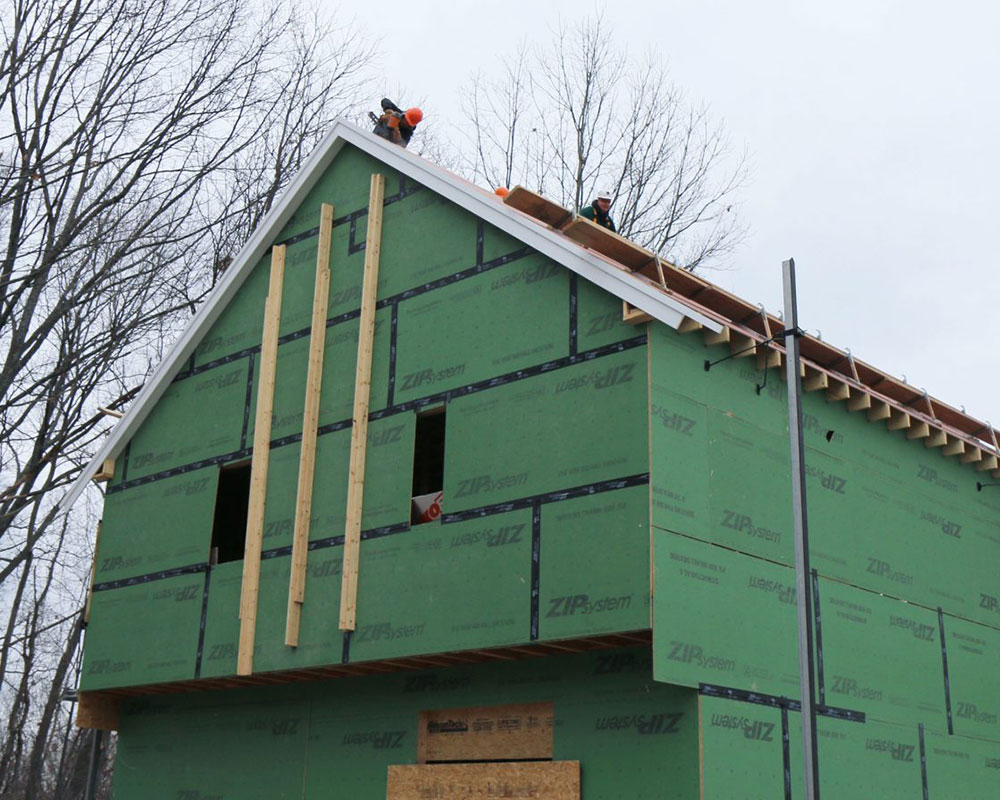A home under construction. Single-family home permits have fallen dramatically in the last several years.
City Council on Tuesday approved a Housing Production Plan produced by the Merrimack Valley Planning Commission. The document provides a roadmap for Haverhill to follow when making decisions about development.
Among the report’s findings is a plunging number of permits for single-family homes and a corresponding increase in side-by-side two-family homes most commonly referred to as condexes.
Several councilors called for a review of the city’s rules for building condexes, including council Vice President Thomas J. Sullivan.
“I’m getting a little tired of seeing condexes popping up in every neighborhood,” Sullivan said. “I’m not liking where I’m seeing them.”
Currently 25 permits for condexes are pending, which totals 50 housing units, Sullivan said.
Councilor William J. Macek noted that many of the two-family homes are being built in the RH (rural, high-density) zone in the outskirts of the city, where lots are less than a half-acre and homes are closer together as a result.
“I think that’s something we need to take a really serious look at in the not too distant future,” Macek said.
All of Haverhill’s housing policies will be reviewed when the city begins to develop a new master plan this year, said Mayor James J. Fiorentini.
“All over the state, lack of housing is a major, major problem,” Fiorentini said. “Haverhill mirrors the rest of the state.”
Although the city’s housing stock is diverse and more affordable than most of the Merrimack Valley, there is a shortage of housing to meet the demand.
“Home sale prices and rents have skyrocketed. That is very good for landlords and people who own their own houses, but very bad for our children and grandchildren who want to settle here,” Fiorentini said. “The way to address this is with a master plan.”
The document focuses heavily on affordability, noted Karen Sawyer Conard, executive director of the Merrimack Valley Planning Commission. One benefit of approving the housing plan is protection from unwanted development should the city fall below the state-mandated 10 percent threshold for affordable housing.
Haverhill is one of a handful of communities in the Merrimack Valley that has reached the 10 percent benchmark, Conard said. In Merrimac, for instance, only 3 percent of the housing stock is considered affordable.
Communities that fall short are in danger of being forced to accept housing developments that can exceed zoning rules on things like density, height limits and number of units under a law referred to as 40B.
Several councilors said they would like to see more effort by the state to require communities to share the burden when it comes to affordable housing.
Conard said Lawrence and Methuen join Haverhill in meeting the affordable housing requirement, but the farther from the cities one travels, the less affordable housing becomes.
Fiorentini agreed the trend is frustrating.
“We’re doing more than our share to providing affordable housing, as well as we can. I don’t know how to make Boxford, Groveland, Georgetown and the rest of them comply,” Fiorentini said. “If they’re not going to build, the 40B regulation doesn’t apply.”

